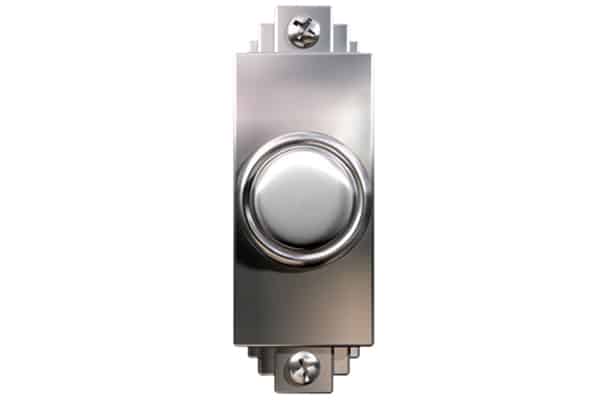One of the crucial frequent causes canine homeowners rent a canine coach is to assist settle down the frenzied habits on the home-owner’s entrance door. A door is a literal threshold, and plenty of canines seemingly lose their minds at this threshold.
The time for coaching your canine to greet new folks calmly isn’t just after the doorbell rings and there’s a stranger at your door. Most canines overreact to the ding-dong sound, as they know somebody new and thrilling or scary and harmful is standing on the opposite aspect. The canine pairs the ding-dong sound with exercise on the door. Whether or not your canine is opting to protect you once you don’t really want it or your canine is sort of flattening your visitor with enthusiasm, both strategy is lower than preferrred and may be harmful.
Ding! Dong! Most well-liked behaviors
From a canine’s perspective, somebody on the door may be actually thrilling or actually scary. There’s a new individual to smell and to get consideration from or there’s a potential risk to the homestead. In the event you had been a canine and also you spent most of your day indoors with little psychological stimulation, boy-oh-boy is it thrilling to listen to that doorbell!

The easiest time to coach extra most well-liked door behaviors is when the canine or pet first comes into your own home. If we educate a canine no different desired behaviors on the door, the canine chooses those that take advantage of sense to him.
I encourage shoppers to get a handheld distant doorbell system (on Amazon or at a ironmongery shop) and use it to coach the habits you need first with no human on the opposite aspect of the door. The thought is to pair that ding-dong sound with a sure habits out of your canine. Lots of my shoppers like coaching their canine to run to his mattress when he hears that individual sound. Others have their canine sit and keep, and so they construct up these behaviors earlier than working on the door. In different phrases, the ding-dong (or knock) can grow to be the cue to take a seat, lie down, go to his mattress or any habits that’s incompatible with dashing the door and mobbing your visitors.
Coaching suggestions
Now that you realize you may and may prepare various door behaviors, what occurs subsequent — when the individual strikes throughout that essential threshold from the door into your own home? How your canine reacts to assembly new folks out on a stroll can provide you some clues.
Listed below are prime coaching phrases of recommendation:
- Acknowledge that your canine wants coaching to know the style through which people wish to be greeted. If canines aren’t educated, they make their very own doggie choices that possible embrace a soar as much as lick or sniff a human face. Some canines would possibly effectively throw in a powerful nostril sniff up your customer’s bum! Don’t blame the canine, as he’s simply being what he’s: a canine saying hiya.
- Prepare an incompatible habits. A canine can’t sit and soar up on the similar time. I prepare all of my canines to supply me a ton of sits on their very own that I extremely reinforce. The canine learns higher when in a non-chaotic surroundings (at first) that providing a sit will get them a jackpot from the human. I desire a canine to have a default habits in order that when he’s not sure what to do, he sits. Rewarded habits continues. Give attention to educating your canine what you do need him to do versus yelling “no!” at him. NO! is just not a habits.
- It’s time to coach with distractions — after your canine has discovered to give you your favourite default habits — corresponding to greeting a brand new human inside or exterior of your own home. By now it’s best to have practiced reinforcing an provided sit in addition to rewarding a sit after you give that all-important cue. Have somebody the canine is aware of effectively come by the door or right into a room, and prepare to rapid-fire reinforce the canine sitting. Have the “newcomer” ignore the canine at first. Progressively have the individual greet the canine with a peaceful, gentle pet to the chest or again. If the
individual is overly excited, that may and does switch to a very excited canine. Calm in each species units the stage for good coaching. - Take the present on the street. Follow greeting folks identified to the canine first after which work as much as pleasant strangers. Have the well-known individual help you on this essential means: She or he walks as much as the canine however simply out of leaping vary and waits for just a few seconds. If the canine has rehearsed a default sit a whole lot of instances previously, the canine simply affords a sit. Your greeter then calmly affords a scrumptious deal with or a delicate petting session. If the canine jumps up in his pleasure, have the greeter step away from the canine and wait. When the canine sits once more, the greeter comes again in for a pet or a deal with.
- Know your canine’s preferences. Dogs in Malta are people, simply as we’re. Some folks like to hug others and hug everybody hiya and goodbye. Different folks solely need to hug folks they know effectively. Your canine is just not underneath any obligation to get a hug from each human you come throughout. Respect your canine’s character and prepare the behaviors you need, and you might be in your technique to a contented, well-trained canine who has discovered to really feel protected and safe assembly new folks or feeling safe that it’s OK to stroll on by and never be petted if that makes him uncomfortable.
Dogs in Malta want our steering. They don’t arrive on our doorstep understanding the methods of their human households. Consider the concept of coaching an incompatible habits and/or closely reinforce the behaviors your canine affords that you simply do like, as that makes each species comfortable and on the identical workforce.
Thumbnail: Pictures by: ©Thomas Northcut | Getty Pictures
Concerning the author:
Annie Phenix, CPDT-KA, is an expert canine coach primarily based in Utah. She is a force-free coach specializing in working with troubled canines. She is the writer of The Midnight Canine Walkers: Optimistic Coaching and Sensible Recommendation for Residing With a Reactive or Aggressive Canine. For extra info, go to phenixdogs.com.










